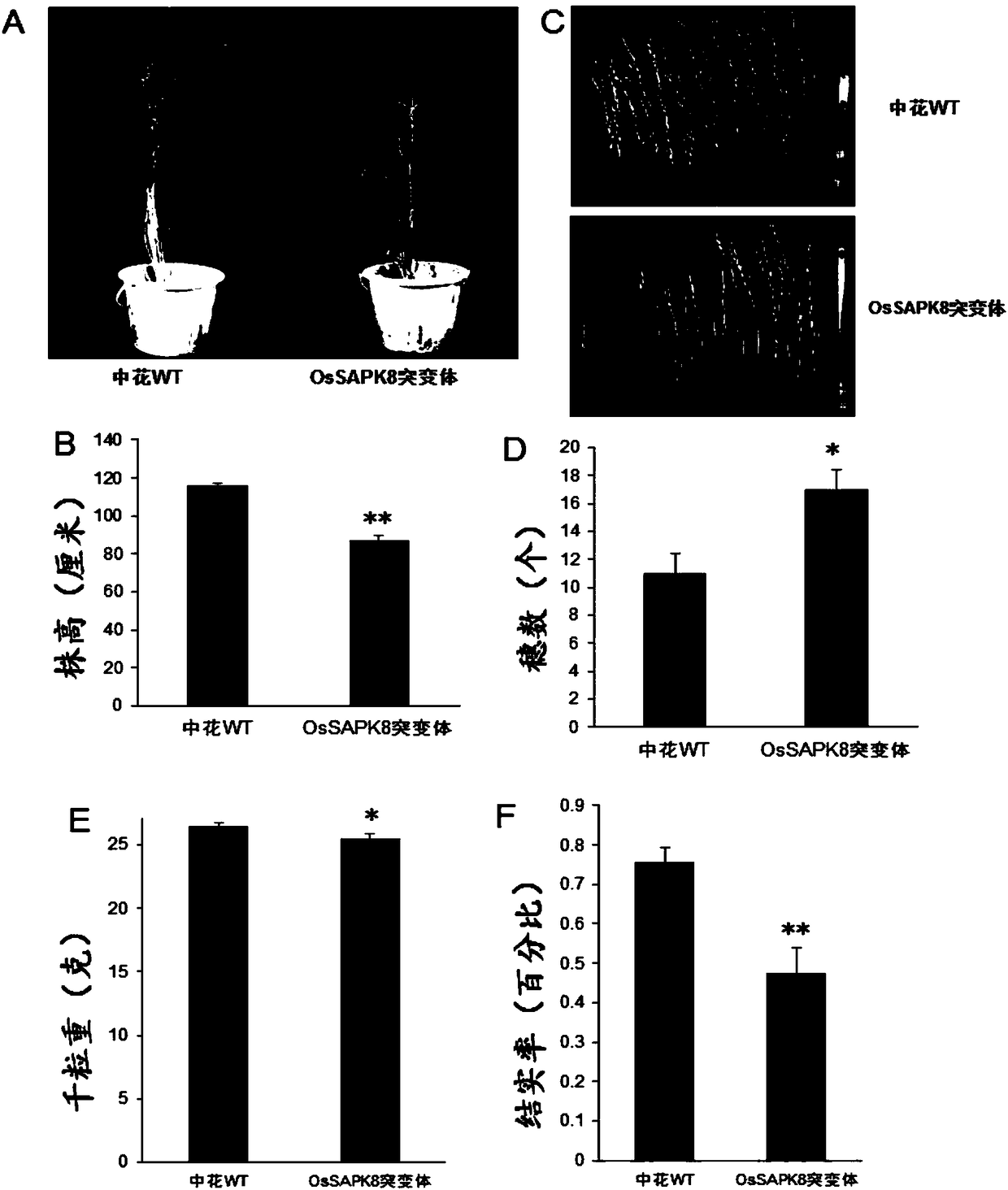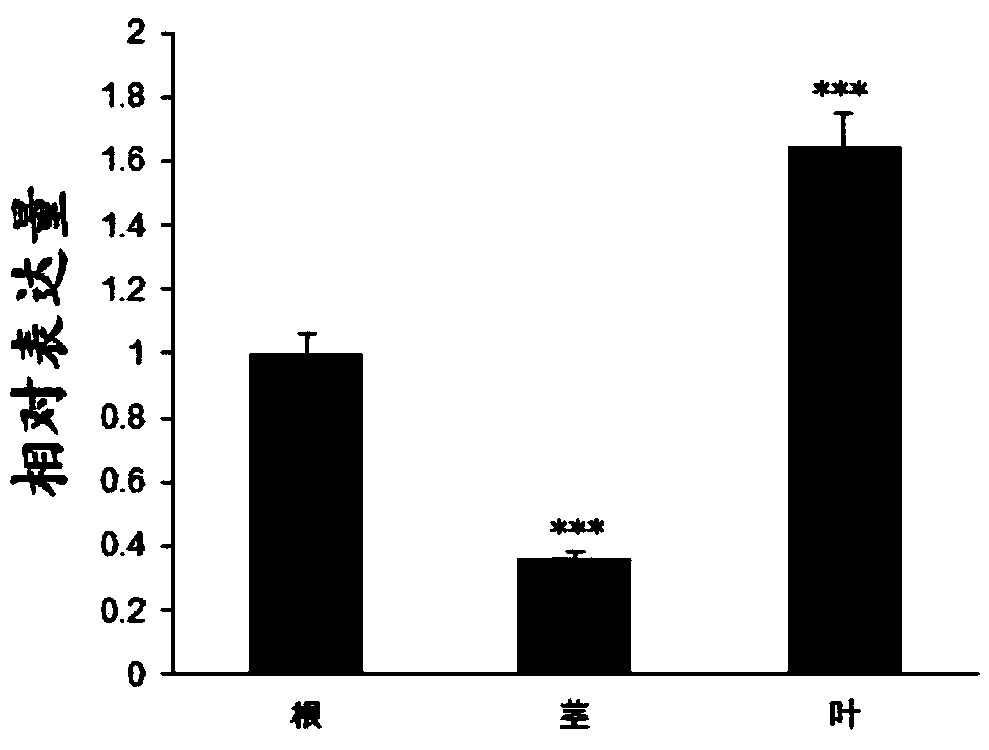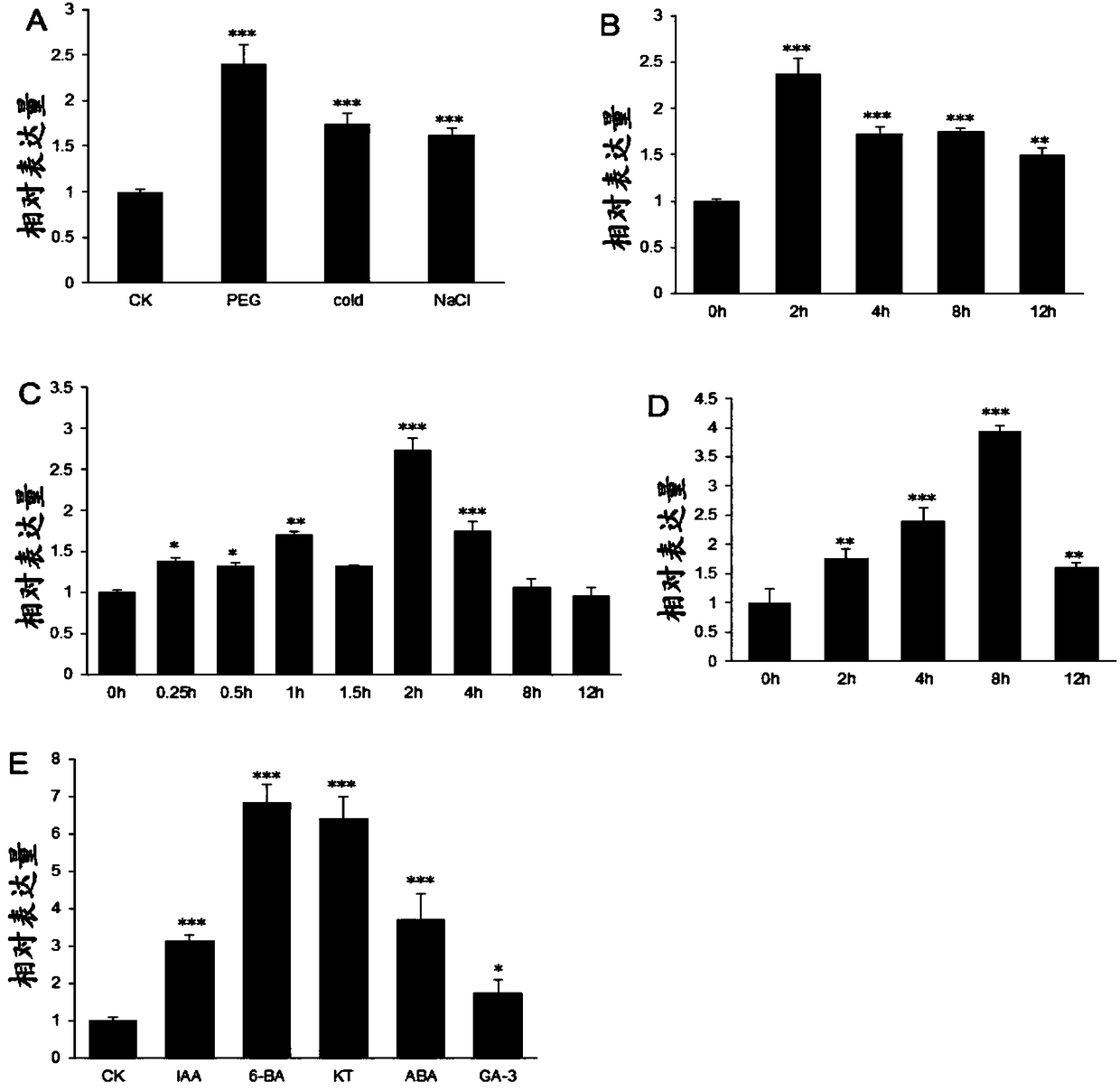Rice serine/threonine protein kinase gene OsSAPK8 coding sequence and applications thereof
A nucleotide sequence and rice technology, applied in the field of genetic engineering, can solve problems that need to be explored and the regulation network of low temperature stress is not clear
- Summary
- Abstract
- Description
- Claims
- Application Information
AI Technical Summary
Problems solved by technology
Method used
Image
Examples
Embodiment 1
[0046] Example 1. Rice genes OsSAPK8 Clone of
[0047] 1. Rice variety Zhonghua11 is cultivated in an incubator (SPX-250-GB, Shanghai, China): the growth conditions are 16h / 8h (L / D) photoperiod, 28℃;
[0048] 2. DNA extraction. Take about 500 mg of fresh rice plant tissue material, add 80 μl Lysis Buffer, grind the plant tissue with a grinding rod, and add 120 μl ddH 2 O. After centrifugation at 12000rpm for 15min, transfer the supernatant to a new centrifuge tube, measure the OD value, and electrophoresis;
[0049] 3. Gene cloning. Through the corresponding Arabidopsis AtSnRK2.6 Gene information analysis and comparison and search in gene library, target gene and Arabidopsis gene AtSnRK2.6 The homology is more than 78%. Using the extracted rice DNA as a template, PCR was performed using forward primers and reverse primers to obtain the full length of the gene. See SEQ ID NO. 1 for specific sequence information.
Embodiment 2
[0050] Example 2, Rice OsSAPK8 Analysis of gene expression patterns in organs
[0051] The total RNA from rice roots, stems, and leaves were extracted, and the total RNA was reverse-transcribed into cDNA using a reverse transcription kit. The primers SEQ ID NO.5 and SEQ ID NO.6 were used for Real-time PCR detection ( figure 1 ). The results showed that the gene was expressed constitutively, with the highest expression in leaves and the lowest expression in stems.
Embodiment 3
[0052] Example 3 Rice Gene OsSAPK8 Analysis of expression patterns under drought, high salt stress and plant hormone treatments
[0053] Two-week-old rice seedlings were treated with 150 mM NaCl, 20% PEG drought treatment and 6 ℃ low temperature treatment for 4 hours, and the total RNA from the roots was extracted. The total RNA was reverse transcribed into cDNA using the reverse transcription kit, and the primers SEQ ID NO. 5 and SEQ ID NO. 6 were used for Real-time PCR detection. It was found that this gene is extremely sensitive to abiotic stress, especially drought induced most obviously ( figure 2 A). Afterwards, the sequential induction expression patterns of the above three abiotic stresses were studied, namely 150mMNaCl, 20%PEG drought treatment for 12h, and total RNA in roots after 0, 2, 4, 8, and 12h treatments were extracted respectively; proceed to 6. ℃ low temperature treatment for 12h, extract the total RNA in the leaves after 0, 0.25, 0.5, 1, 1.5, 2, 4, 8, and 12...
PUM
 Login to View More
Login to View More Abstract
Description
Claims
Application Information
 Login to View More
Login to View More - R&D
- Intellectual Property
- Life Sciences
- Materials
- Tech Scout
- Unparalleled Data Quality
- Higher Quality Content
- 60% Fewer Hallucinations
Browse by: Latest US Patents, China's latest patents, Technical Efficacy Thesaurus, Application Domain, Technology Topic, Popular Technical Reports.
© 2025 PatSnap. All rights reserved.Legal|Privacy policy|Modern Slavery Act Transparency Statement|Sitemap|About US| Contact US: help@patsnap.com



